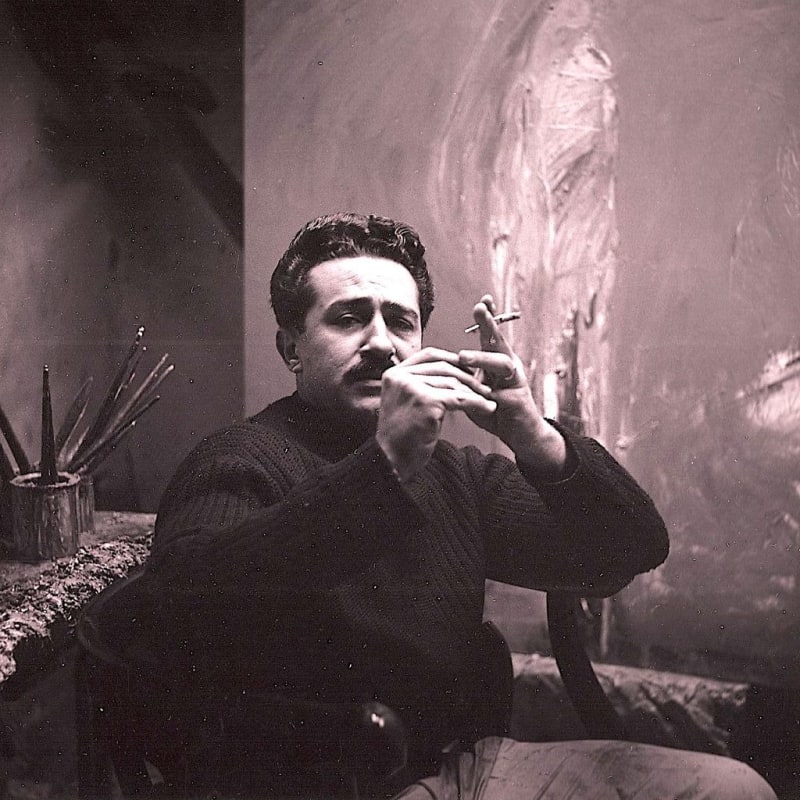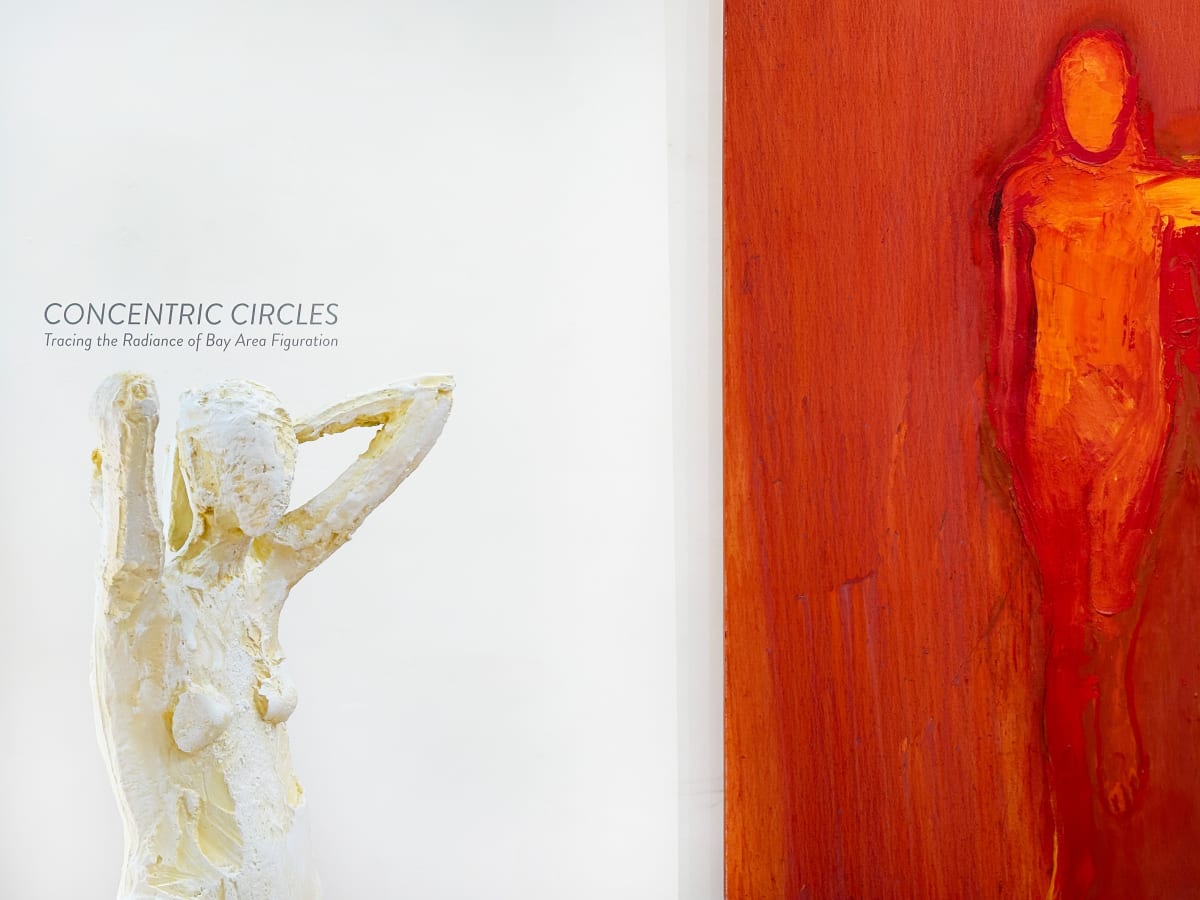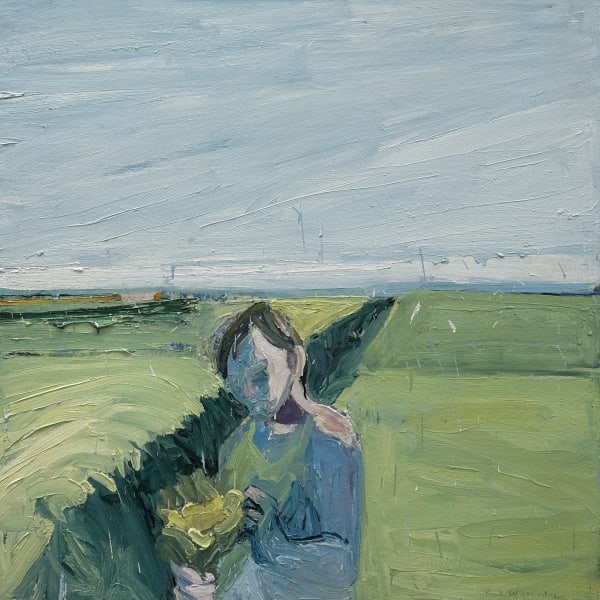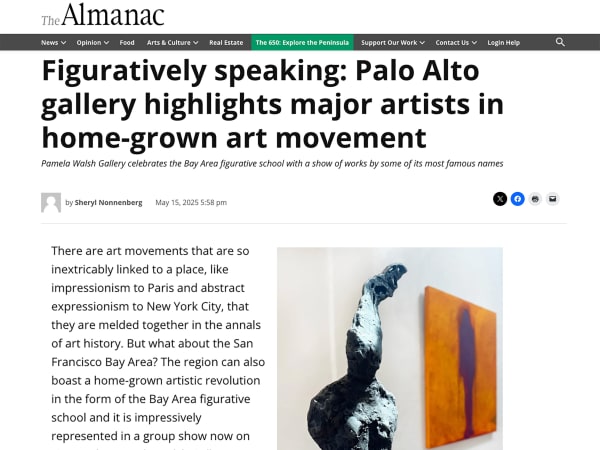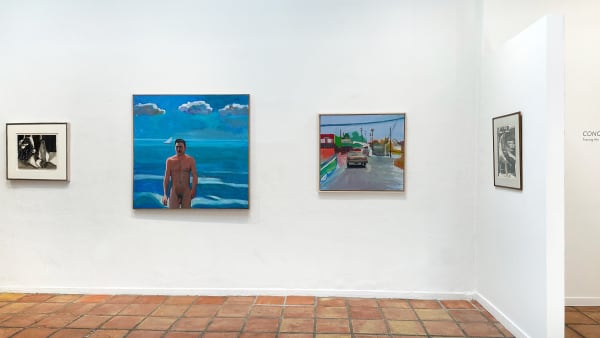Nathan Oliveira American, 1928-2010
A key figure in American Art, Nathan Oliveira (1928-2010) was a persistently individualistic artist who took his own path in defiance of the ideology of the time. With an unshakable concern for the figure, Oliveira was a prominent member of the Bay Area Figurative Movement, along with Richard Diebenkorn, David Park, Elmer Bischoff and others. A resident of Palo Alto, he taught at Stanford University for 32 years as a Professor of Studio Art. In 1959, Oliveira gained early fame as a painter, when four of his works were selected by Peter Selz for his curatorial debut exhibition, New Images of Man, at the Museum of Modern Art in NY.
Nathan Oliveira started exploring the theme of the solitary figure in the 1950s, following the dictates of his personal manifesto,“make things out of paint.” Standing apart from his Abstract Expressionist peers, Oliveira’s early inspiration and influence came from the Expressionist Max Beckmann, whom he studied with at Mills College in Oakland. He also had a great affinity for Giacometti, Dubuffet and de Kooning. They were artist’s artists; with de Kooning, he could discuss the elusiveness of the human figure and the ephemeral experience of seeing it within the canvas. Oliveira’s subjects were drawn from within, from his internal quest to understand the human condition and our collective need to understand our place in the universe. Oliveira painted to create spaces with no visible beginnings or boundaries. “I am an abstract painter who finds the figure.” His variations of the abstracted human figure in ambiguous, mysterious spaces were a constant theme throughout his career and can be seen in his paintings, monotypes, watercolors and sculptures.
Oliveira identified the most important characteristics of his work as chance, risk and gesture, which he combined with a personal concern for the more traditional aspects of figure painting. The apotheosis of his style evolved from his search for an expressive relationship between form and space that found resonance in his presentation of the single figure. The human touch, so often absent in Contemporary art, is always present in the work of Nathan Oliveira.
-

Concentric Circles Press Release
April 15, 2025Concentric Circles: Tracing the Radiance of Bay Area Figuration Exhibition Dates: May 2 – June 22, 2025 Opening Reception: Friday, May 2, 5–7 PM Panel...Read more -

Figuratively speaking: Palo Alto gallery highlights major artists in home-grown art movement
Pamela Walsh Gallery celebrates the Bay Area figurative school with a show of works by some of its most famous names May 15, 2025 Read more -

Concentric Circles: Tracing the Radiance of Bay Area Figuration at Pamela Walsh Gallery, Palo Alto
John Seed Blog May 28, 2025 Read more -

Five downtown galleries revive Palo Alto’s First Friday Art Walk
The monthly event’s first outing will be June 6, with galleries offering extended hours for visitors to check out their current shows June 4, 2025 Read more
